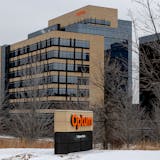The Center for Economic Inclusion on Tuesday launched a new tool to help Minnesota companies analyze their racial diversity and inclusion programs.
The St. Paul nonprofit — whose sponsors include the McKnight Foundation, Target, U.S. Bank, 3M, Thrivent, JP Morgan Chase, Wells Fargo, Mortenson and Best Buy — worked with and at the request of companies and business organizations to create the Minnesota Racial Equity Dividends Index.
Companies can register for the index online and assess their equity and inclusion progress against 37 "standards of excellence" used to build racially inclusive workplaces and supply chains.
Businesses participating in the new index will receive a score and a customized report detailing their performance and opportunities for growth.
"Our hope is that businesses will be particularly drawn to the index, both given their history of participating in comparable surveys on gender, disability and sexual orientation, but also given their significant role in the state's economy," said Tawanna Black, the center's chief executive.
Those who requested the index included the chambers of commerce in Minneapolis and St. Paul and the Itasca Project, an employer-led civic organization.
"Each expressed interest from their members in a tool from the center to help businesses measure the results of commitments made following George Floyd's murder and the uprisings demanding racial and economic justice," Black said.
Since then, businesses in the Center's own Anti-Racism and Economic Justice Trust expressed a need to understand their own diversity and equity performance and to benchmark themselves against peers by size and industry.

